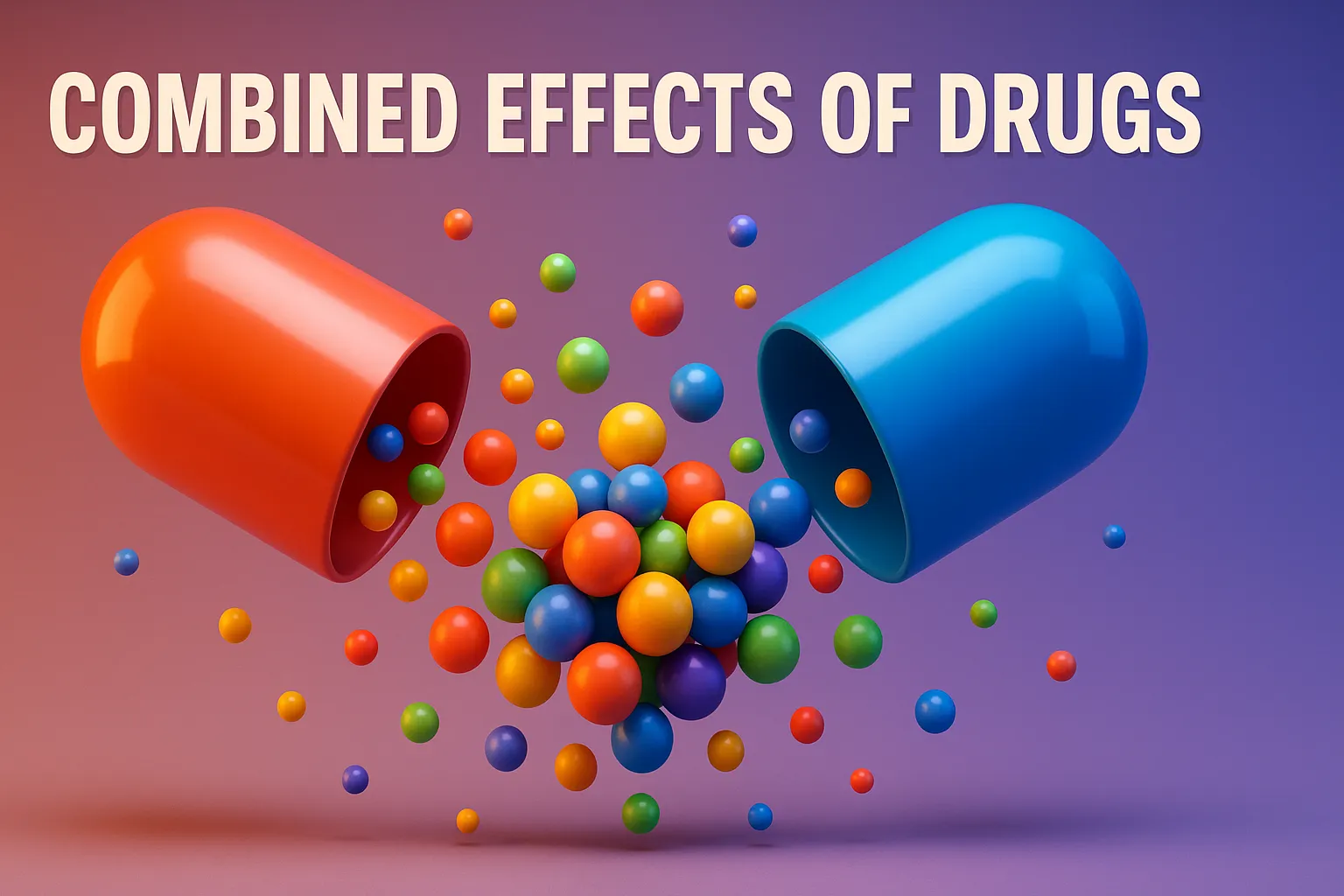Combined Effects of Drugs describe how two or more drugs interact, producing additive, synergistic, or antagonistic effects on the body.
Combined Effects of Drugs
When two or more drugs are used together, they may interact in different ways:

-
Synergism
-
Definition:
- Two drugs given together produce a greater effect than the sum of their individual effects.
-
Types of Synergism:
- Additive effect:
- Effect of Drug A + Drug B = A + B
- Example: Paracetamol + Ibuprofen for analgesia
- True Synergism:
- Effect of Drug A + Drug B > A + B
- Example: Sulfamethoxazole + Trimethoprim (co-trimoxazole) → enhanced antibacterial effect
- Additive effect:
-
-
Antagonism
-
Definition:
- One drug reduces or inhibits the effect of another drug.
-
Types of Antagonism:
- Chemical Antagonism
- Drug interaction occurs chemically.
- Example: Chelation of heavy metals with EDTA.
- Pharmacological Antagonism
- Drugs act on same receptor but have opposite effects.
- Example: Naloxone (opioid antagonist) blocks morphine.
- Physiological Antagonism
- Drugs act on different receptors with opposing physiological effects.
- Example: Insulin (lowers blood sugar) vs Glucagon (raises blood sugar)
- Chemical Antagonism
-

